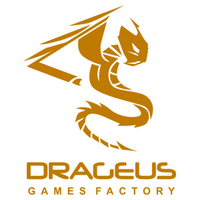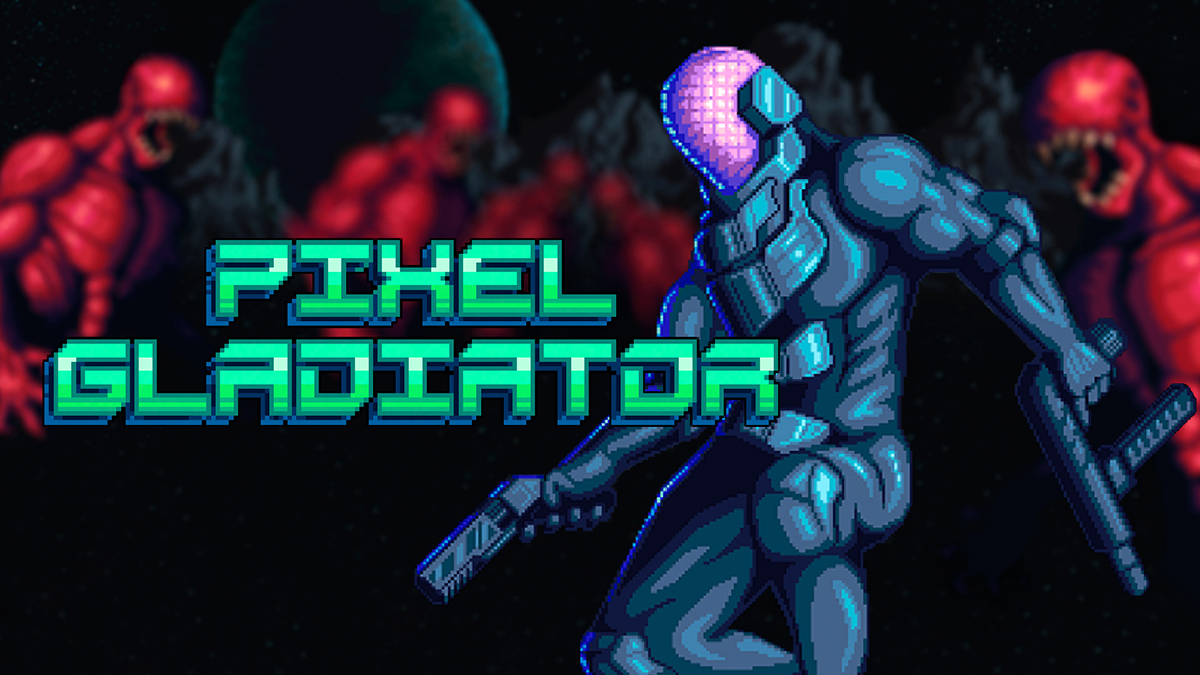Pixel Gladiator
Published By: Drageus Games
Category: Side-Scrolling Tower Defense
Release Date: 10.25.2019
Pixel Gladiator is a side-scrolling tower defense game that melds a sci-fi aesthetic and horde mode with waves of incoming enemies — think Kingdom: New Lands mixed with The Running Man. Although the game offers some fun gameplay and an interesting formula that hasn’t been replicated to death, it is lacking in some soul and just leaves you feeling like something is missing.
The story isn’t presented to you in any meaningful way in the game, outside of through some environmental cues, but the developers describe the game as you being a gladiator on a TV show; filmed for entertainment on an abandoned planet. The money you accrue for upgrades is gifted by the viewers who can see you through the cameras at either end of your base. This is where you get the obvious The Running Man vibes, but none of this is really presented through the gameplay so you really don’t have to put too much mind into it.

Being a tower defense game means you have a base of operations of some sort that you must defend by gaining spendable currency that you utilize for better defenses. The tower defense genre isn’t short on examples, but this side-scrolling 2D model is a newer take on the genre. And it is with this setup that you get the inspiration from the 2015 indie PC darling that made its way to the Switch as Kingdom: New Lands. In this type of tower defense, you see a basic fort mold with enemies funneling in from either side. There aren’t any branches or verticality; you just take on enemies from the right or left. This allows for a supreme focus on what is happening, but also means the action amps up much more significantly in comparison to more traditional tower defense titles. The game clearly takes most of its ideas from Kingdom, and although that is the basis of genres being created, it is pretty clear they just wanted to make a space, gun-wielding version of the game. No detriment, as the game is fun as it stands, but is a clone, nonetheless.

In this title, you see your fort taking on a much more basic mold than any of its predecessors. You only have one wall on either side of your fort to defend, and depending on the mode, some various machines you can use to create helpers or get other types of base upgrades. The walls can be upgraded multiple times for increased health and to stop taller or flying enemies from coming over the wall. Machines can create drones and other units that help fight off the hordes with melee or distance combat. And beyond that you can aid your units with your own arsenal, as you wield guns of different, upgradeable types. This is pretty much the gist of the upgrades allowed, and although the strategy when deciding where to spend your money is fairly weak, you still have to make some choices. Would you prefer having drones help fight off the enemies at the ground level, or do you pump up your walls and turrets and let the base defend itself? Well, the answer is up to you, but you don’t have as much choice as you think.

Enemies are funneling in from either side, and although they continuously get stronger and larger, they are pretty basic units as a whole. They don’t throw a ton of curve balls at you from the start, and by the time some interesting things start happening you have a pretty good defensive structure. But then the game introduces boss fights, which is by far the weakest point of the game. It is a huge bummer that the largest divergence from the formula built by Kingdom is such a rough experience. Bosses of different types enter the fold that force you to use your own weapons and skill to take them down. These enemies are bullet sponges, that are difficult to damage at times, not because of anything besides hit registration issues. I had a giant worm-like creature come down from the top of my base and start spewing jellyfish creatures everywhere. You had to shoot the creature in the “head” while also avoiding or killing the jellyfish. Seems like a basic premise, but no matter what I did I couldn’t figure out how to successfully make sure my shots registered consistently. Meaning, inevitably, I died and lost the run. Not sure what I was doing wrong, as I was even getting right up in its gullet to make sure I hit the head, but alas the damage done was minuscule and ended the run quite prematurely. Thus, you are forced to really emphasize your own characters upgrades, which defeats some of the tower defense purpose. On the flip side, I am glad they didn’t just make a game that simply had you upgrading your automatic defenses where you can just sit back and relax, but I feel like the emphasis on taking on the baddies solo takes the game a bit closer to being a SHMUP of sorts, than the intended tower defense.

Pixel graphics are utilized, as you probably could have guessed, and the art is done very well. The aesthetic is nice, and the sci-fi vibes were great in comparison to other titles in the genre. The game looks a bit like an upgraded version of Risk of Rain or Xeodrifter. Nothing about the way the game looked is a bad thing, but also isn’t particularly impressive when you take into account the things that are being done in the indie space.
Overall, Pixel Gladiator offers a fun experience that when taken as a final product is something, I could see myself jumping into for a run or two when bored. However, a serious difficulty spike (or potential bug) in the boss battles makes runs end way before they should, and that is extremely disappointing when the genre is built on trying to take runs as deep as possible. Although not allowing you to just sit back and build is a nice touch, they may have emphasized the solo combat a bit more than I would have wanted as a big-time fan of the genre. The game has some spunk, but misses slightly here and there.





Buy Now – $6.99
FOLLOW DRAGEUS GAMES

*The Switch Effect was provided a code for this game*
[Review] Hello Kitty and Friends Happiness Parade – Nintendo Switch

Developed By: Dabadu Published By: Rogue Games Categories: Rhythm Release…







